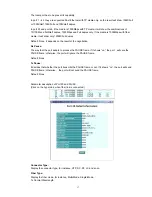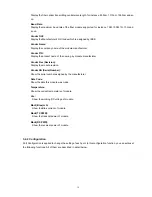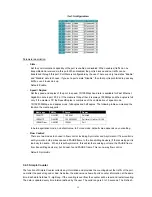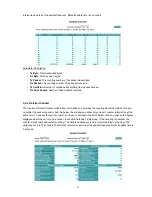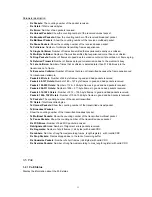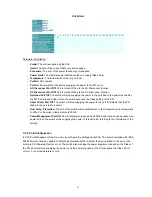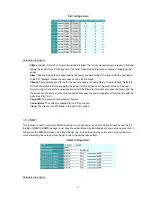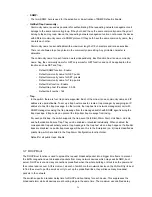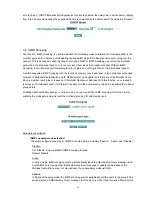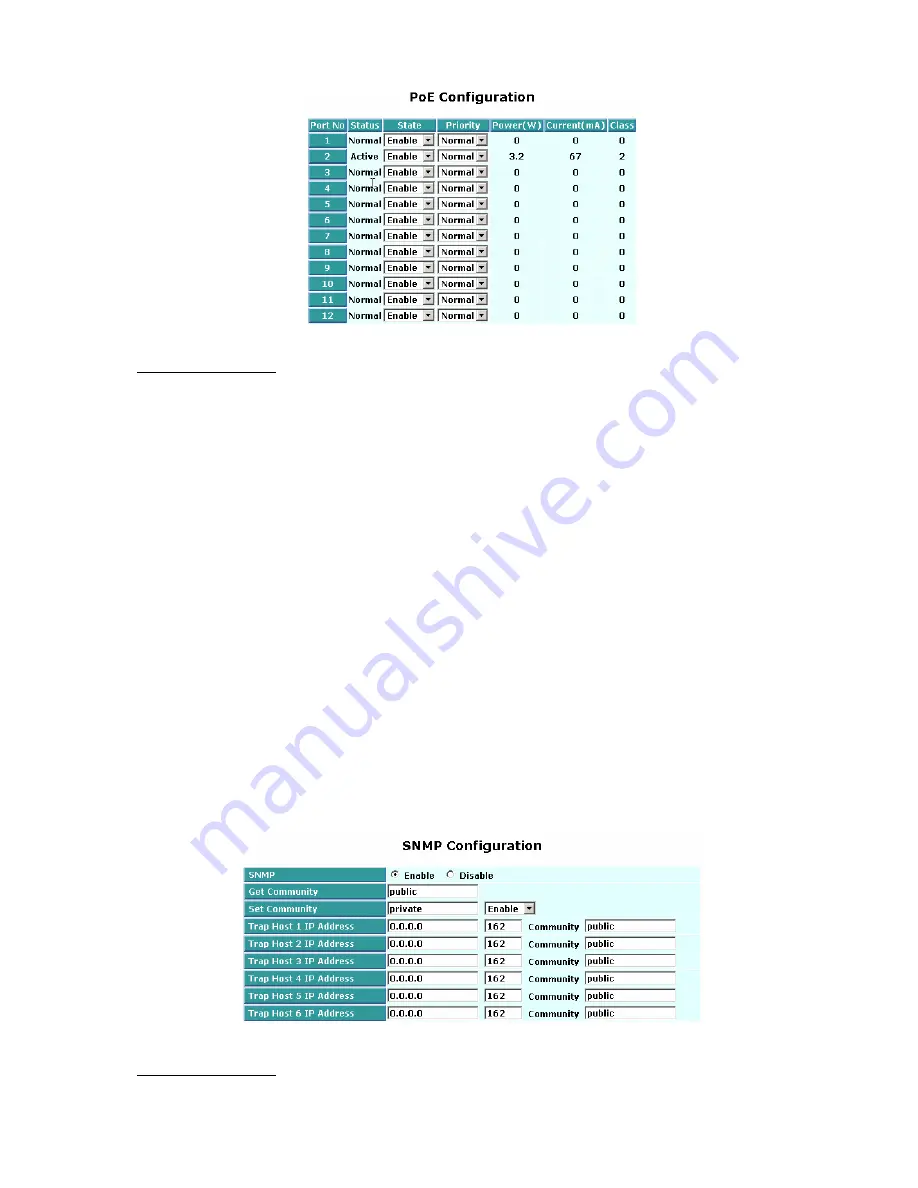
Parameter description:
y
Status:
Include “Normal” or “Active” two kinds of status. The former means the port is ready to link and
supply the power to the PD at any time. The latter means the port is in the condition of supplying the
power.
y
State:
”Enable” means the manager allows the power supplied to the PD is legal while the port linked
to the PD; “Disable” means the port does not own PoE function.
y
Priority:
Three options are offered for the user to choose, including Normal, Low and High. Default is
Normal. The switch will stop supplying the power to the port based on the order of the priority Low
Æ
Normal
Æ
High in case total power required by all PDs linked to the switch excesses the power limit. As
the ports have the same priority, then the switch will cease the power supplement from the port with the
highest port id (12
Æ
1).
y
Power(W):
The power is consumed by the port.
y
Current(mA):
The current is supplied to the PD by the port.
y
Class:
The Class of the PD linked to the port of the switch.
3.6 SNMP
This function is used to configure SNMP settings, community name, trap host and public traps as well as the
throttle of SNMP. A SNMP manager must pass the authentication by identifying both community names, then it
can access the MIB information of the target device. So, both parties must have the same community name.
Once completing the setting, click <Apply> button, the setting takes effect.
Parameter description:
23









